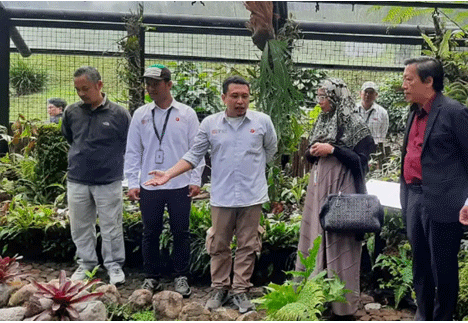The reopening of the Nepenthes glasshouse at Kebun Raya Cibodas marks a significant milestone in plant conservation and education. Home to 80 Nepenthes species, including critically endangered and threatened varieties, this glasshouse plays a crucial role in preserving Indonesia’s unique biodiversity. According to the IUCN Red List, 27 Nepenthes species face extinction risks, with four critically endangered and four endangered. These plants, commonly known as pitcher plants, thrive in specific environments such as peat swamps, heath forests, and montane regions, making their conservation particularly challenging.
Kebun Raya Cibodas’ glasshouse contains species from Sumatra, Java, Kalimantan, Sulawesi, Papua, and beyond, along with hybrid varieties. The facility also houses seven other carnivorous plant genera, such as Cephalotus, Sarracenia, and Dionaea, enriching the educational experience for visitors. Modern infrastructure, including reverse osmosis misting systems and grow lights, ensures the optimal environment for these rare plants, simulating their natural habitats to support growth and reproduction.
Deputy of Research and Innovation Utilization, R. Hendrian, emphasized that botanical gardens serve as vital hubs for plant conservation. Beyond showcasing rare species, their mission extends to sustainable research, species recovery, and public education. By revitalizing the Nepenthes glasshouse, Kebun Raya Cibodas has created a dynamic space where visitors can explore the ecological significance of carnivorous plants and their unique adaptations.
The need for conservation is urgent. Many Nepenthes species are endemic to specific regions and highly sensitive to environmental changes. Human activities, such as deforestation and land conversion, have drastically reduced their habitats. Through collaboration with researchers and organizations like the Indonesian Carnivorous Plant Community (KTKI), the glasshouse aims to safeguard these species through propagation and long-term monitoring.
BRIN’s Director of Scientific Collections, Ratih Damayanti, underscored the importance of educating younger generations about the ecological role of Nepenthes. Plans to publish a comprehensive catalog detailing the unique traits of each species further demonstrate the commitment to fostering public understanding and appreciation for these remarkable plants.
The General Manager of Kebun Raya Cibodas, Joko Sulistio, expressed hope that the glasshouse will attract more visitors, offering a blend of recreation and education. Since its initial launch in 2014, the glasshouse has become a symbol of Indonesia’s dedication to preserving its natural heritage.
The reopening of the Nepenthes glasshouse at Kebun Raya Cibodas highlights the critical intersection of conservation, education, and scientific research. By providing a sanctuary for endangered carnivorous plants and engaging the public in their preservation, this initiative strengthens efforts to protect Indonesia’s unique biodiversity. With continued collaboration and innovation, botanical gardens can lead the way in combating plant extinction and promoting sustainable ecosystems.










